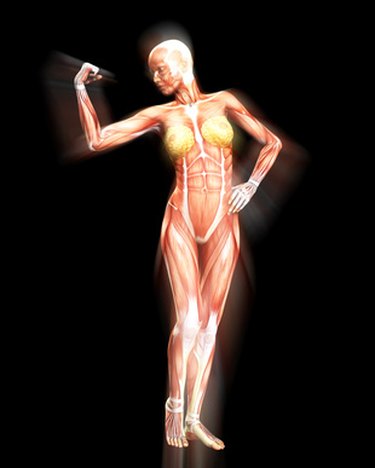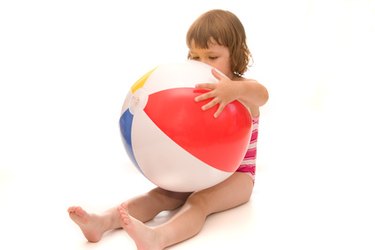
You joined a gym and go religiously three to four times a week. You take an aerobics class, then you hit the circuit for some muscle work. You're there no less than 1 ½ hours each time. At home you're eating healthy and drinking lots of water. Yesterday, you even got into your "skinny" pants. You feel good and you look good, according to compliments from friends. Then you step on the scale and feel a rise in anger as you realize you've gained weight. Don't despair. This commonly happens to people striving to lose weight.
Physiology
Video of the Day

When you exercise, your muscles become denser and heavier. So while you lose fat pounds, you gain muscle pounds. Muscle weighs more than fat, so it follows that you will gain weight on the scale. However, according to Sportsdoctor.com, muscle has a faster metabolism than fat, nearly 10 to 20 times faster. This means muscle uses more energy than fat does. Its energy expenditure comes from the fat stores it burns. So, as muscle increases, fat decreases. The scale doesn't explain this physiologic fact.
Video of the Day
Muscle’s Importance

Muscle gives you strength to lift, bend and move. When you exercise, you tone your muscles, and they become more efficient. Even though muscle weighs more than fat, muscle takes up less room on your body, because its makeup is denser. Picture this. Compared to a beach ball, a small solid rubber ball weighs more. All of its weight compresses into a small space. The beach ball, though many times larger, weighs less. Now imagine both balls as parts of your body. Which would you rather have as a part on your body?
Solution
First, you have to get out of the mind set that the scale measures your success. Decide if you would rather gauge a healthy body by the number of pounds it weighs or by how it looks, what size it fits into and how trim it feels. LaRue E. Cook, BS, MHA, JD, of Doittennis.com, advises to have a fat analysis done by a fitness trainer at your gym. Real progress becomes evident when you see the ratio of muscle to fat changes, because you have changed your body composition.
New Goals

You've given up the idea that the scale's measure of weight loss counts most. Now you need to adopt a new assessment gauge. First, try on some smaller clothes each week. You will see your progress as they get closer and closer to fitting. Second, take your measurements with a tape measure once a week. Keep a record of the results each time. As the numbers decrease, you'll know your fitness plan is working.
Measuring
The best places to measure include the upper arms, the chest across the breasts, the waist in line with the navel, the hips in line with the hip bones, the upper thighs and the calves. Placing the tape measure in the same area each time will give you the best comparison. For your arms, thighs and calves, place the tape measure around the area of the largest diameter for accuracy.